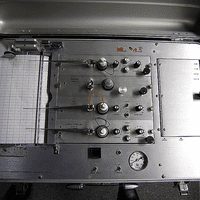
Aug 19, 2010
We interviewed Dan Langleben while researching for our show on Deception. He says he can see differences in brain activity when a lie is told about a playing card in your pocket. He identified a few regions in the brain that changed in metabolism during a lie. That is, it seemed as though it took more energy for the brain to lie.
The exact functions of these brain regions can be controversial but they may be involved in deception:

IFC, Inferior frontal gyri or Inferior frontal Cortex (semantics and control over behavior)
Premotor Cortex (activate motor activity through the primary motor cortex)
ACC, Anterior Cingulate Cortex (reward, decisions, empathy)
Fusiform gyrus or body (face recognition)
Listen to Dan Langleben talking to Jad about these brain regions at the top of the page.
Pre-911, before Dr. Langleben received heaps of money to study deception, he studied children with ADD. Here he discusses the connection between two seemingly disconnected areas of research and the improvements in the technology that made his transition possible:
In his study, Langleben was careful to control for 'salience'. This means he wanted to make sure the brain activity he saw wasn't just due to excitement in seeing the card in their pocket. But there may also be some usefulness for this control: